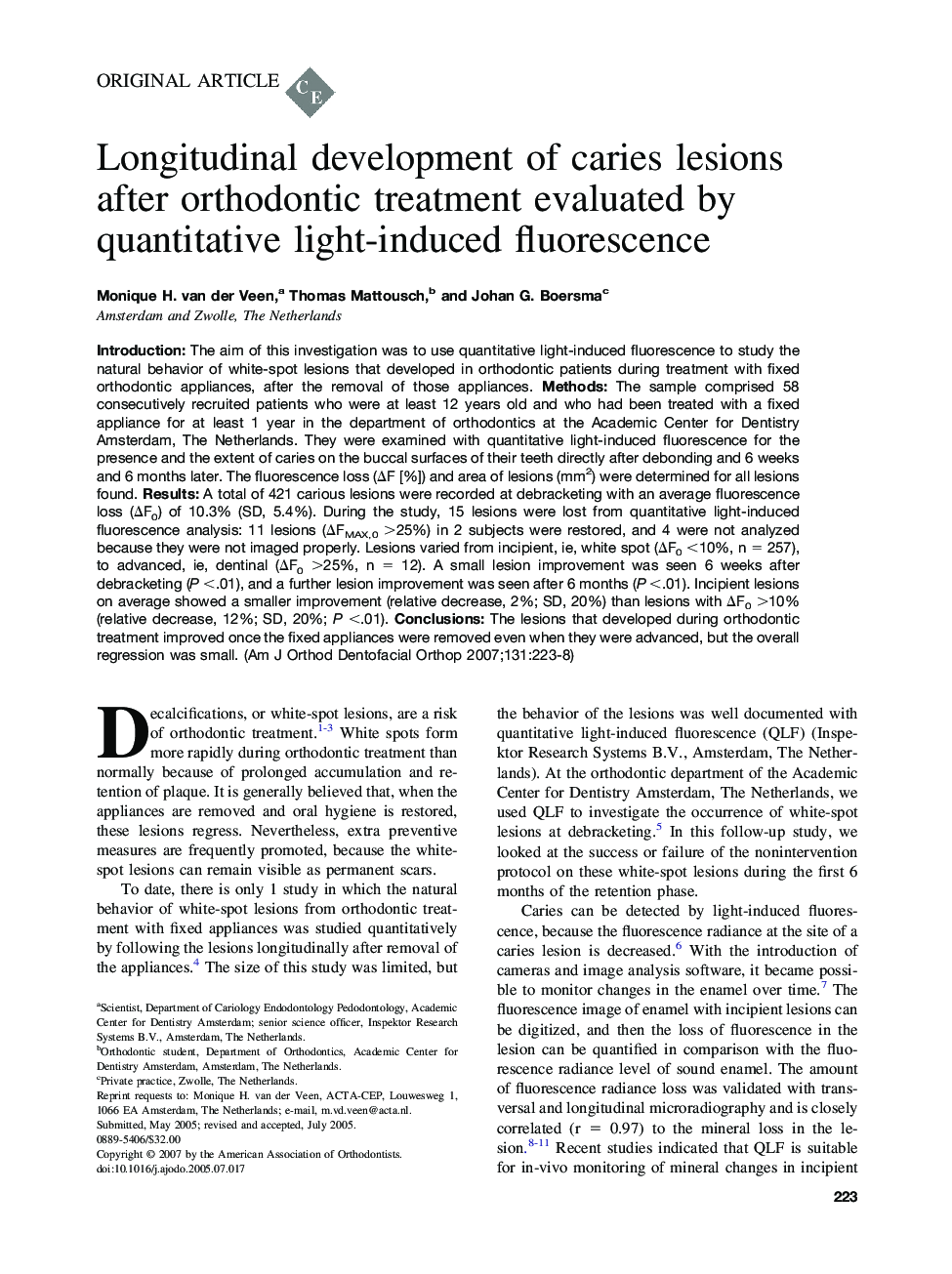| Article ID | Journal | Published Year | Pages | File Type |
|---|---|---|---|---|
| 3119303 | American Journal of Orthodontics and Dentofacial Orthopedics | 2007 | 6 Pages |
Introduction: The aim of this investigation was to use quantitative light-induced fluorescence to study the natural behavior of white-spot lesions that developed in orthodontic patients during treatment with fixed orthodontic appliances, after the removal of those appliances. Methods: The sample comprised 58 consecutively recruited patients who were at least 12 years old and who had been treated with a fixed appliance for at least 1 year in the department of orthodontics at the Academic Center for Dentistry Amsterdam, The Netherlands. They were examined with quantitative light-induced fluorescence for the presence and the extent of caries on the buccal surfaces of their teeth directly after debonding and 6 weeks and 6 months later. The fluorescence loss (ΔF [%]) and area of lesions (mm2) were determined for all lesions found. Results: A total of 421 carious lesions were recorded at debracketing with an average fluorescence loss (ΔF0) of 10.3% (SD, 5.4%). During the study, 15 lesions were lost from quantitative light-induced fluorescence analysis: 11 lesions (ΔFMAX,0 >25%) in 2 subjects were restored, and 4 were not analyzed because they were not imaged properly. Lesions varied from incipient, ie, white spot (ΔF0 <10%, n = 257), to advanced, ie, dentinal (ΔF0 >25%, n = 12). A small lesion improvement was seen 6 weeks after debracketing (P <.01), and a further lesion improvement was seen after 6 months (P <.01). Incipient lesions on average showed a smaller improvement (relative decrease, 2%; SD, 20%) than lesions with ΔF0 >10% (relative decrease, 12%; SD, 20%; P <.01). Conclusions: The lesions that developed during orthodontic treatment improved once the fixed appliances were removed even when they were advanced, but the overall regression was small.
